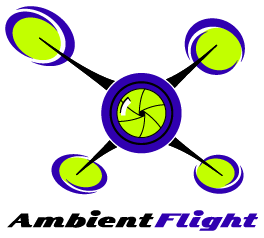

I haven’t had a lot of time to work in the lab, but I have squeezed a few minutes here and there for the last few days to get the FPV (first person view) equipment setup. I chose the site getfpv.com for the gear as they came highly recommended. I already had an FPV camera, which was part of the Arris Zhaoyun 3-axis gimbal. Here’s the list of the gear from getfpv.com:
I chose 5.8GHz so those frequencies do not interfere with my remote transmitter/receiver as that is running at 2.4GHz.
Copter Side
This evening I got the basic wiring for the FPV camera on the front of the gimbal, with signal wires running from the gimbal to the 600mw A/V transmitter. I had an extra five volt JST power plug hanging from the power distribution board from some previous installations, and used that to power the FPV transmitter. Since the FPV camera is part of the gimbal, I decided to use the upper part of the gimbal as a frame to mount the transmitter and antenna.
So the gimbal attachment has the onboard big camera, FPV camera, and FPV transmitter.
Remote Side
On the receiver side I used a Phantom battery which is basically 12 volts, to power the 8″ monitor and receiver. I created and soldered a special wiring harness which has an XT60 connector for the battery on one side, and Y’s off to two power connectors for the video receiver and monitor.
Surprisingly the setup worked right off the bat (see photo below), as soon as I figured out what channel the video was being transmitted on (17).

Taking a picture of the FPV camera on the copter (left of the silver Sony), and the video signal coming from it as seen on the monitor
I have yet to get the receiver, battery, and monitor attached to my transmitter. That’ll be next and then the first test flights hopefully soon.
When flying with my quadcopter and GoPro, I set the camera to automatically take photos at certain intervals. This is great when trying to capture photos and flying line of sight, as the camera is just shooting all the time. I ran into a problem with not being able to do this with my big hexacopter and Sony NEX5-T camera. There is no auto shoot or time lapse mode for the NEX camera.
I did some research online and found the Flytron sLED v2 Sony RC Shutter. This is a small infrared device with servo plugs which plug directly into the aircraft’s radio receiver. The sLED v2 allows the operator to remotely trigger photo taking, or turn on/off video recording. Fantastic. Both can be done in-flight.
Setup
A free channel on the transmitter and receiver is needed to set up the sLED. The channel should be assigned to a three position switch. The middle position is no action, while on my setup flipping the switch up triggers a photo shot and flipping the switch to the bottom position turns on video recording.
The sLED unit needs to be able to get its infrared signal to the infrared sensor on the NEX camera. I wanted to be able to put the sLED on and take it off as needed, so a simple bit of velcro on the camera and the sLED made that easy.
I learned that leaving the switch on the transmitter in the up or down position, sends a constant signal. So leaving the switch up on my setup results in constant photo taking. The constant photo taking is not as fast as I would like, at about 8-10 seconds per shot. Leaving the switch in the down position results in a start/stop video of about one second, every 8-10 seconds. For video, leaving the switch down is not useful.
One experiment I have yet to try is a custom setup on my transmitter which would simulate flipping the photo switch every X seconds. More to come on that.
Conclusion
The sLED v2 Sony RC Shutter unit was perhaps the most useful $15 I’ve spent to date on my large multirotor.
It is nice to be able to shoot video and take photos via the sLED. Part of the flight can be for video and part for stills without having to land the aircraft and reconfigure the camera.
I’ve been very happy with the latest results of my flight tests with regards to the smoothness of the video and the gimbal performance. The only current issue to resolve is that the arms and propellers are sometimes in the video and photos. The less aggressively the flight, the less the issue occurs.
So the current need is to lower the gimbal/camera so that the unwanted items are not in the display. One caveat to that is that the landing gear may become visible. Another possible issue is that the longer the throw between the camera and the body of the bird, the bigger effect it will have with the overall balance as well as vibrations.
The first test today will be this setup (above and below pictures), adding about 1.25 inches of extension.
I’ll check for props/arms/landing gear in the video as well as video clarity. I’ll also check the vibration in the SuperX flight controller logs. Also should note how it flies, as the center of gravity of the copter will be affected.
A report will follow.